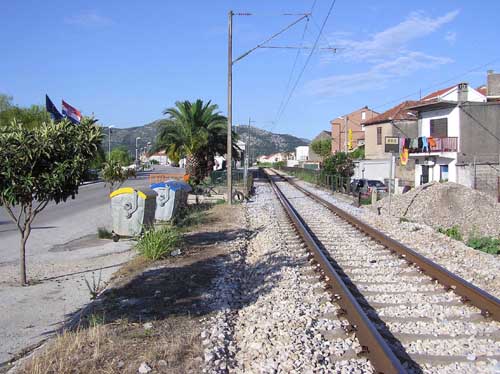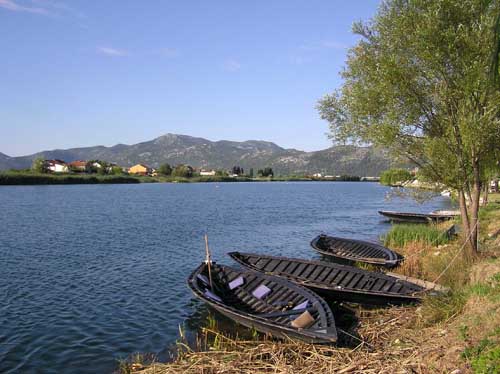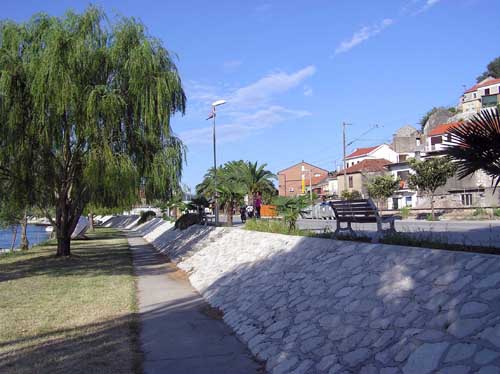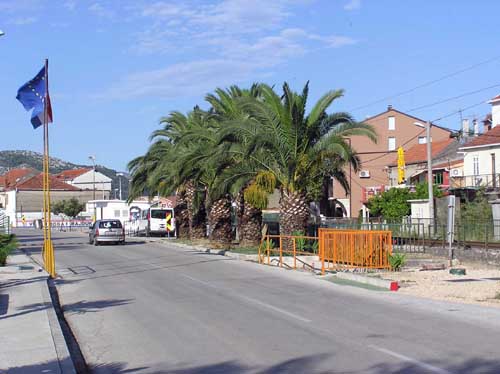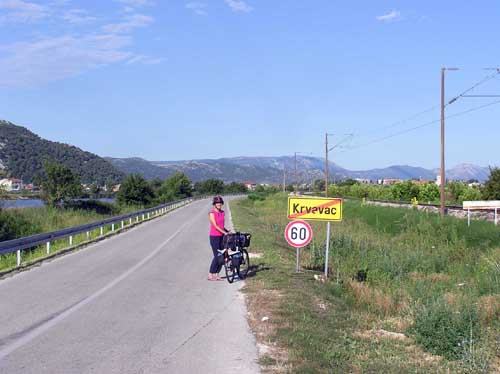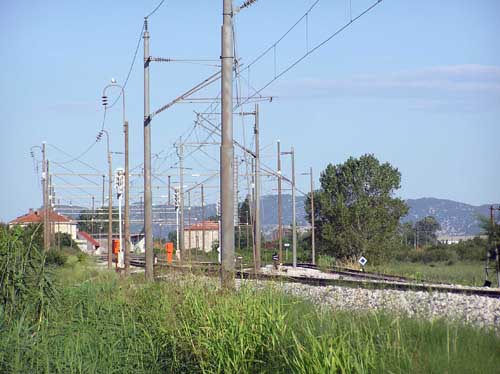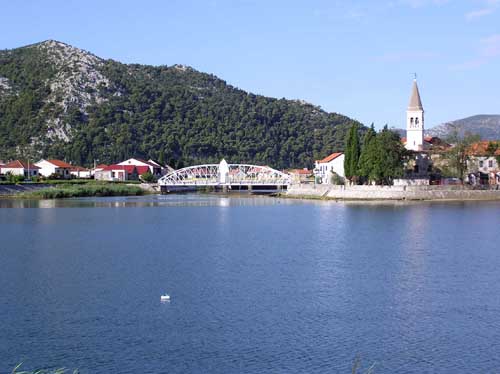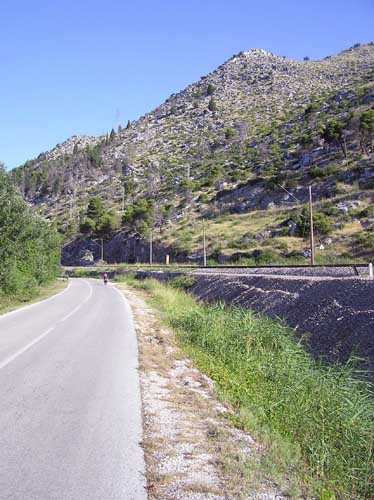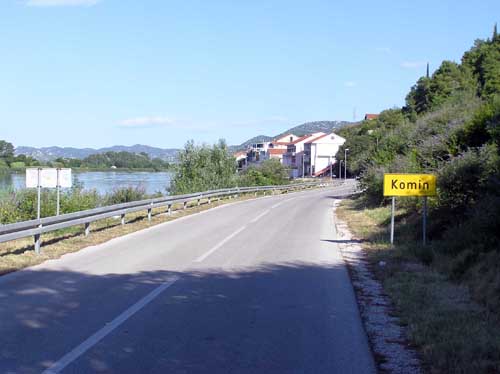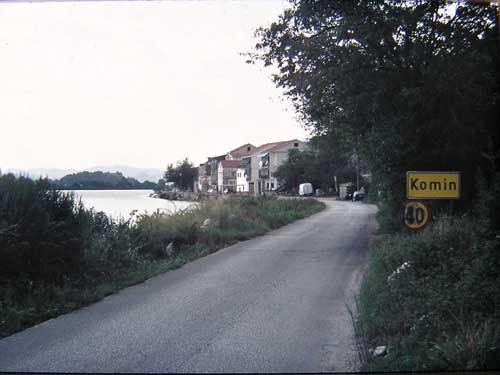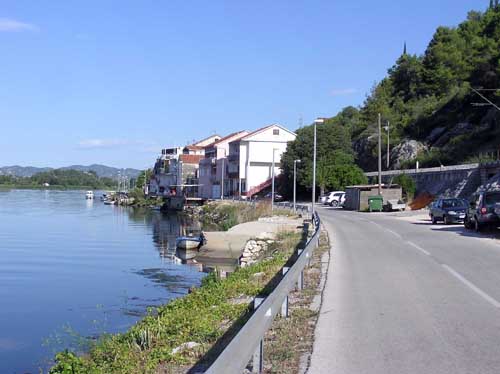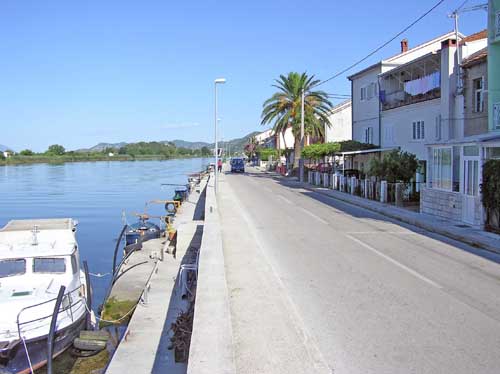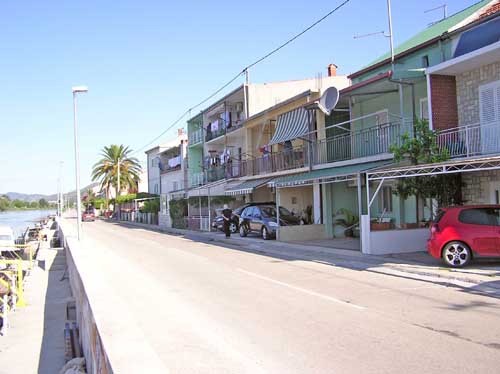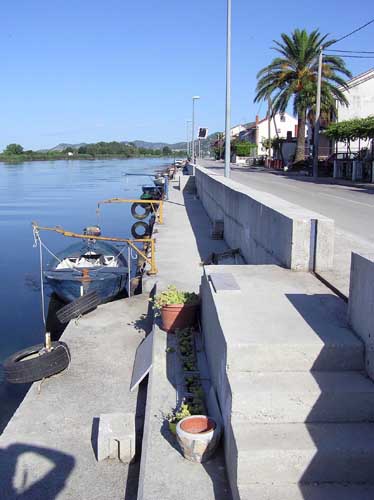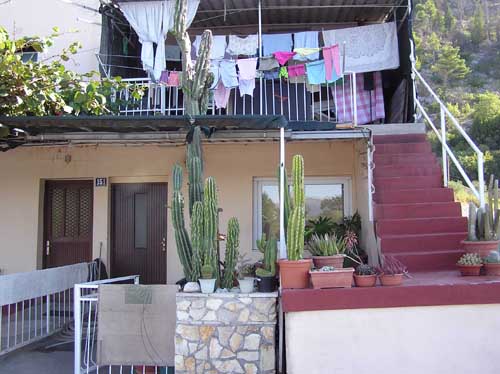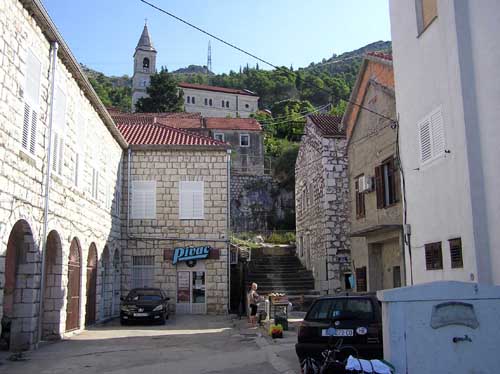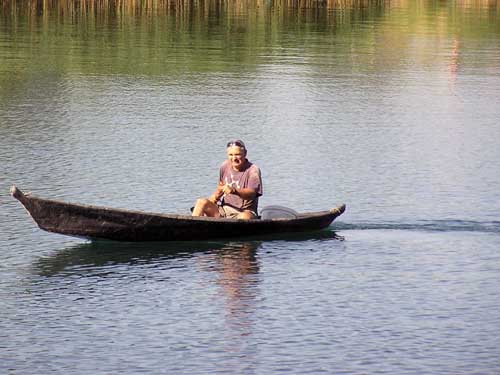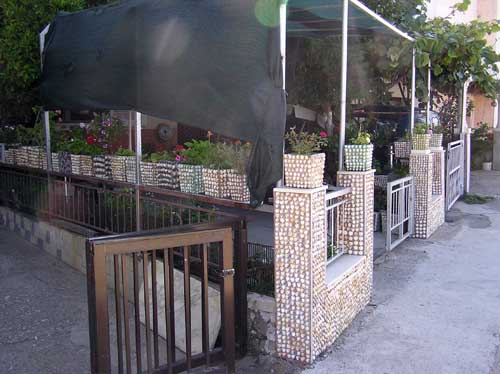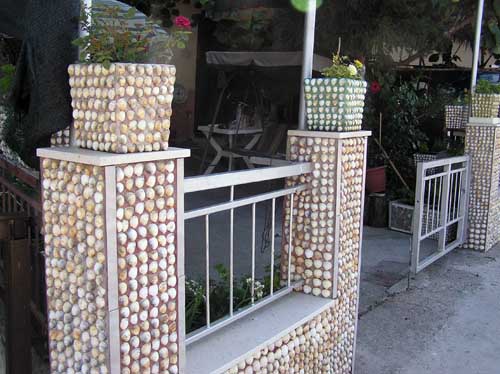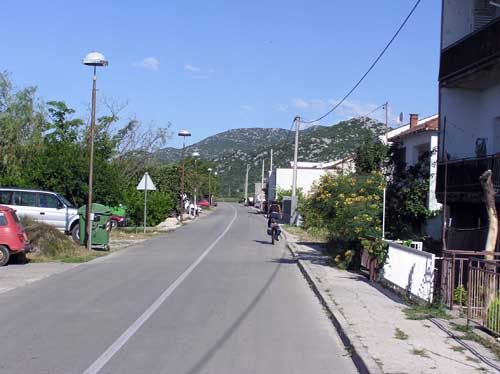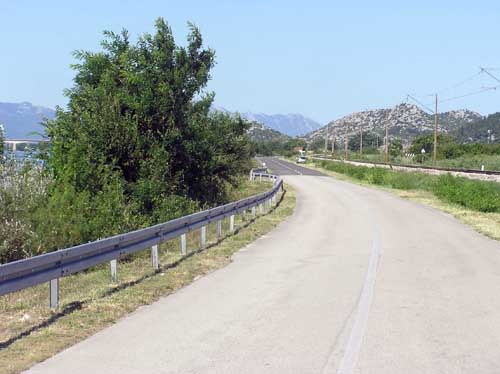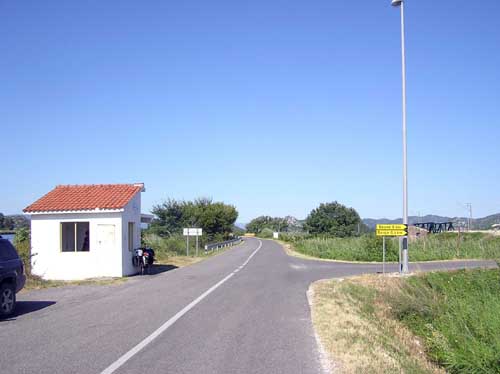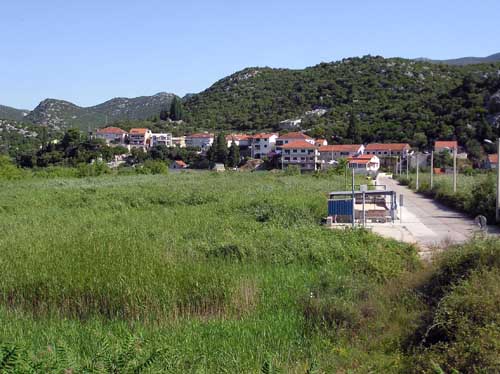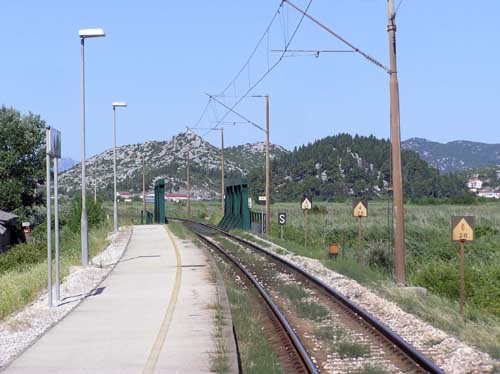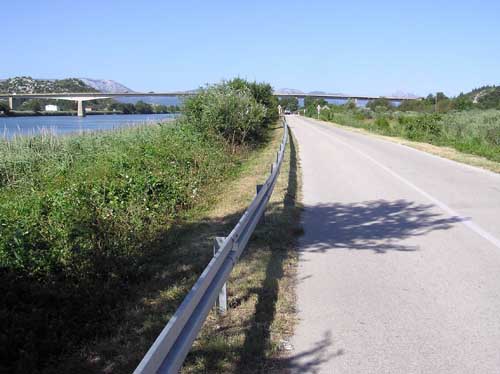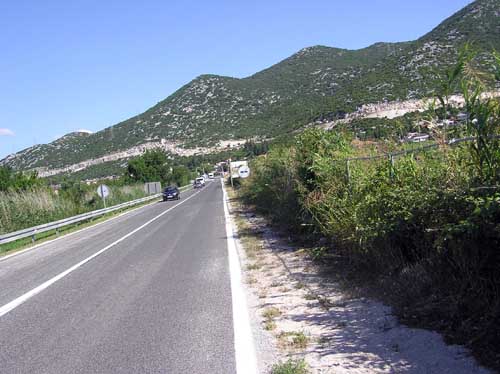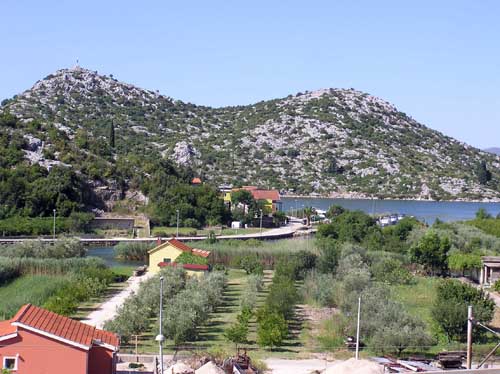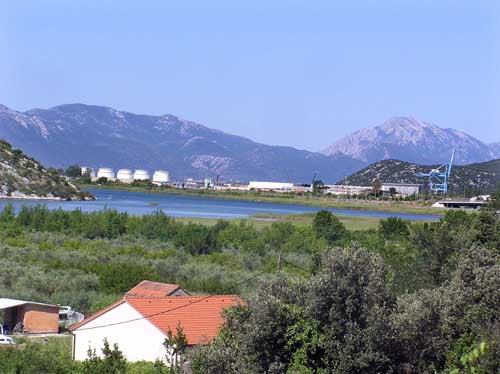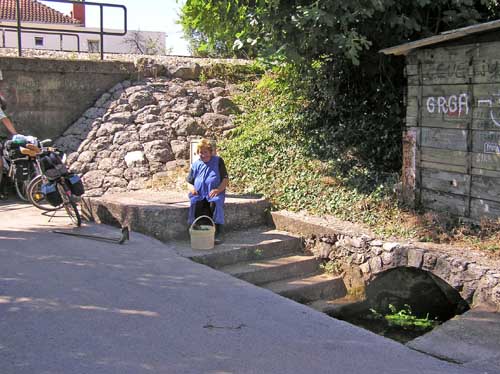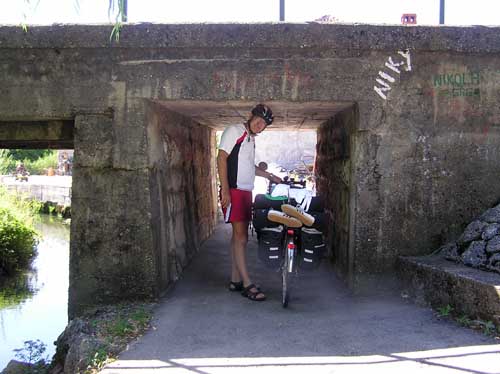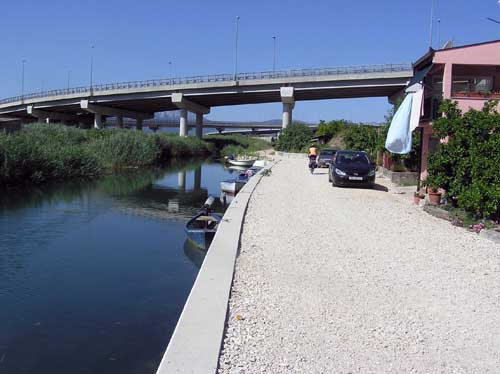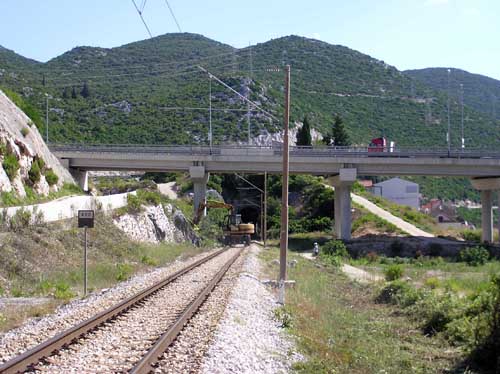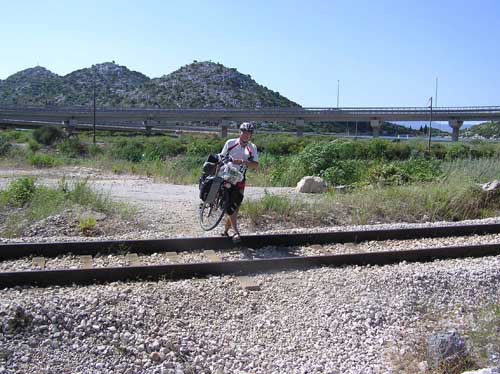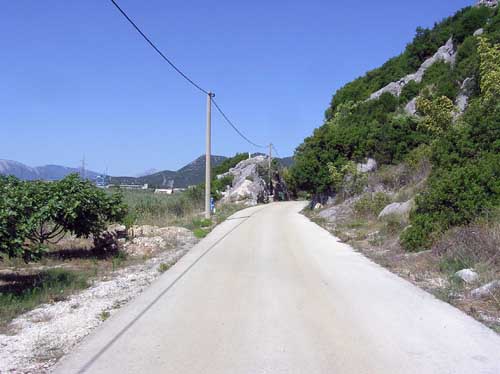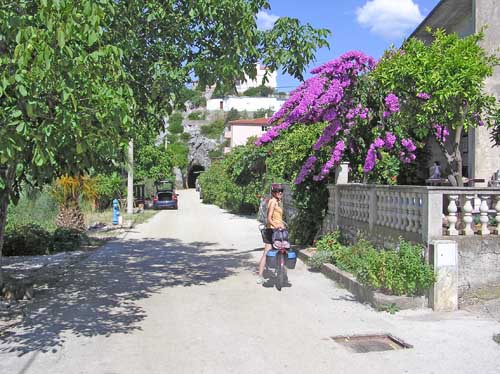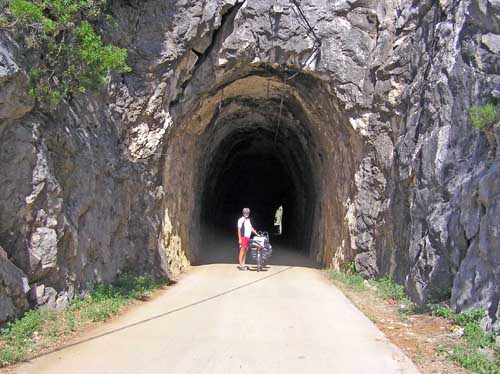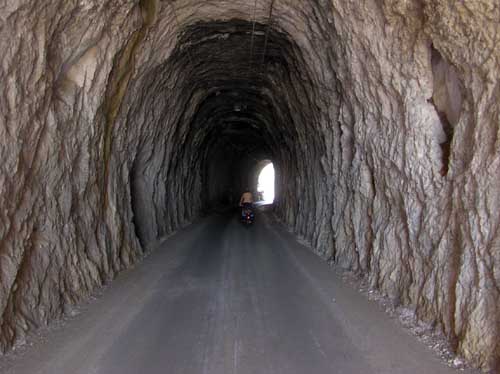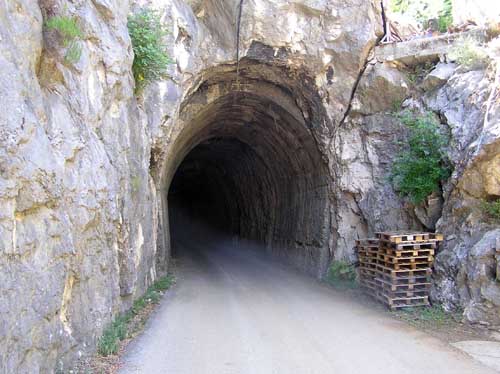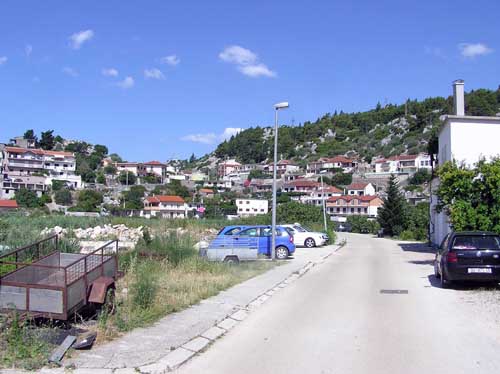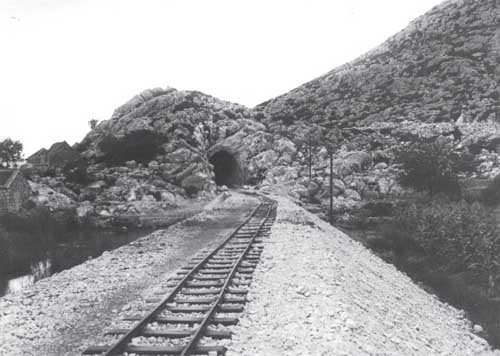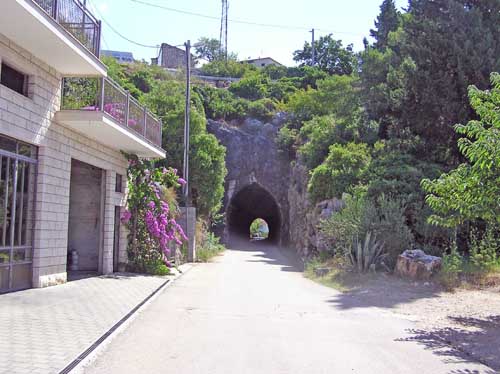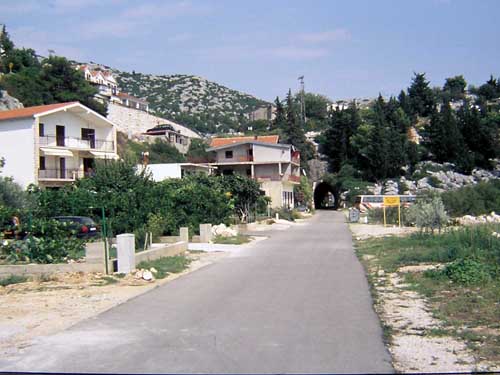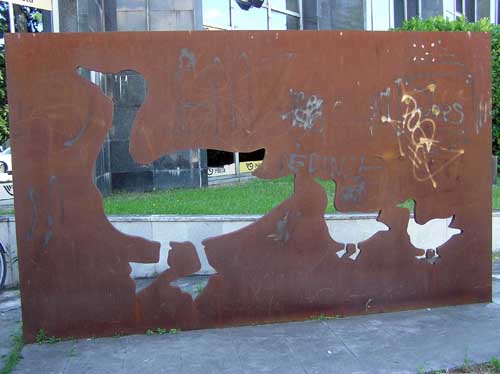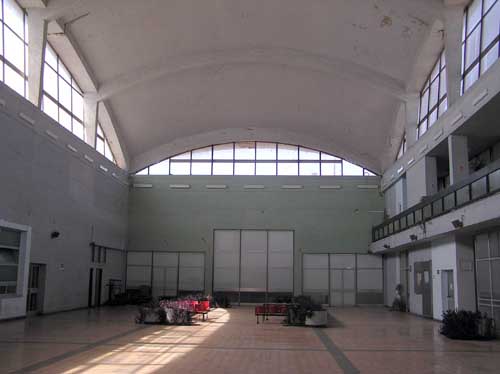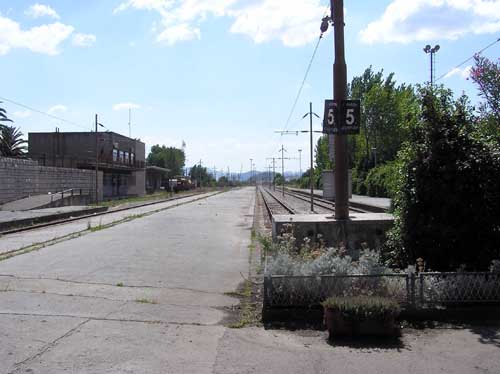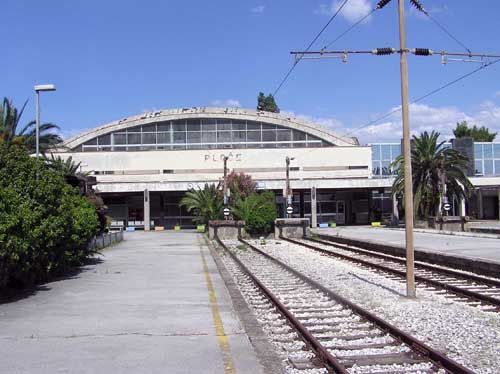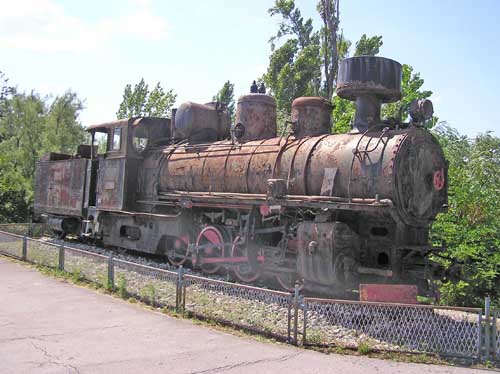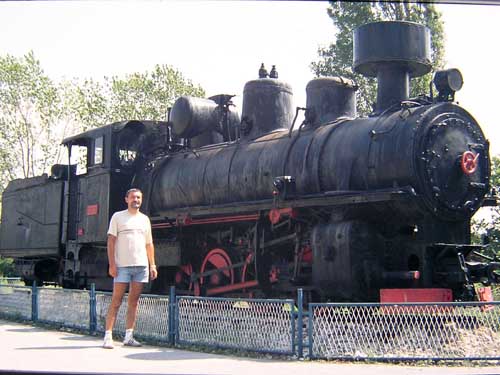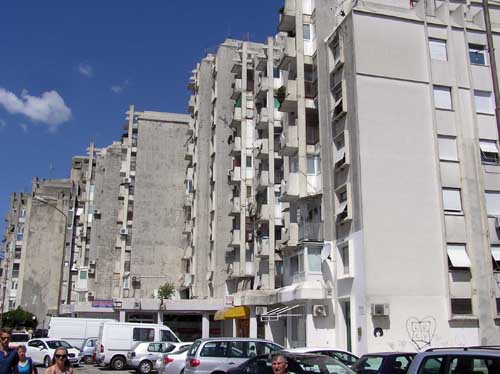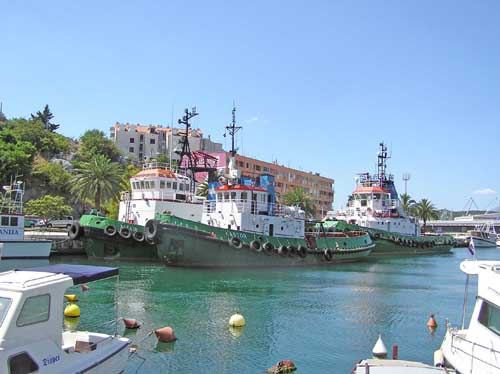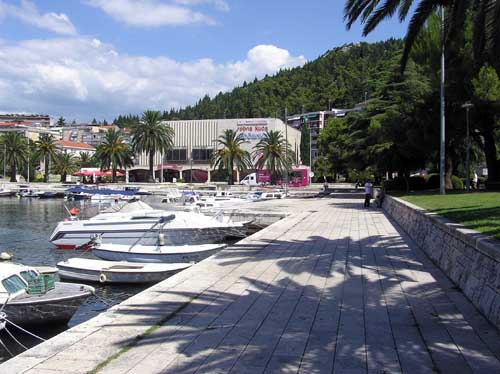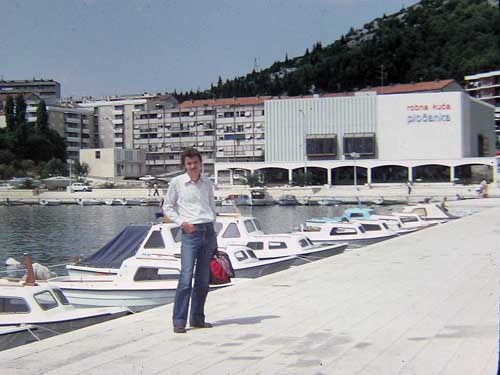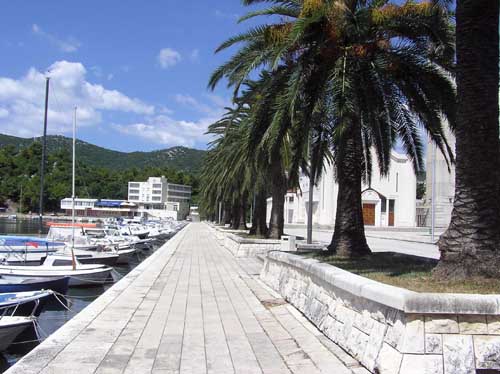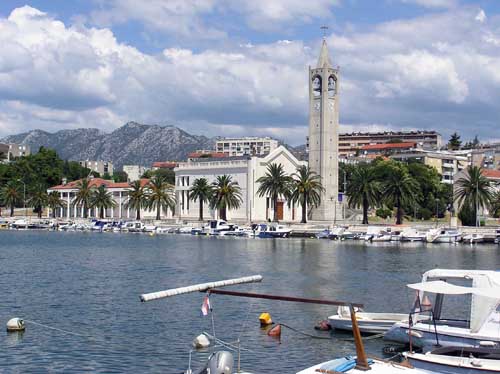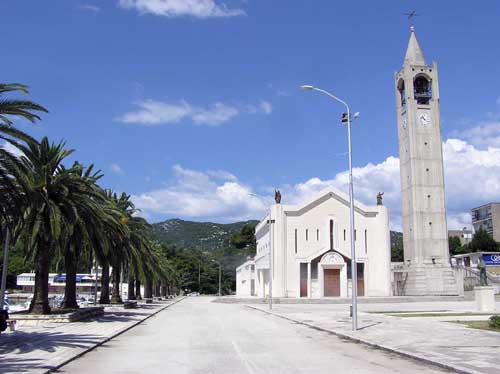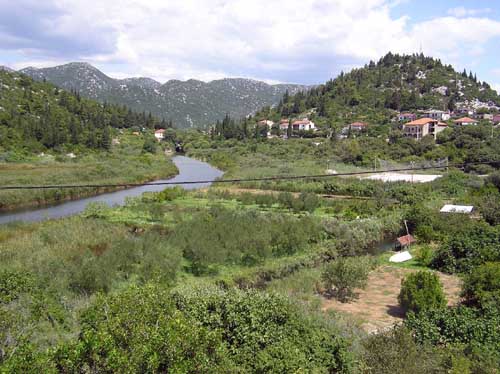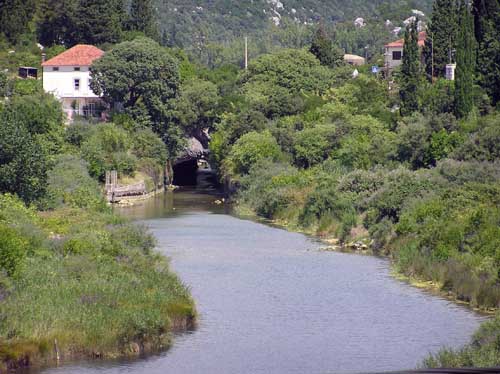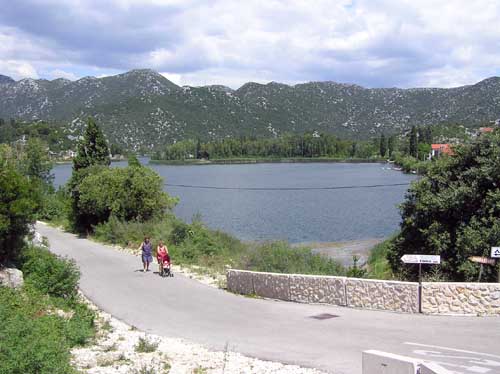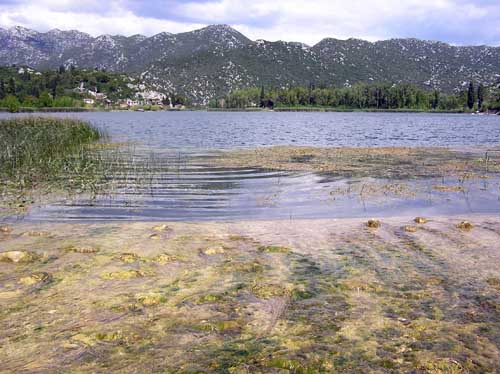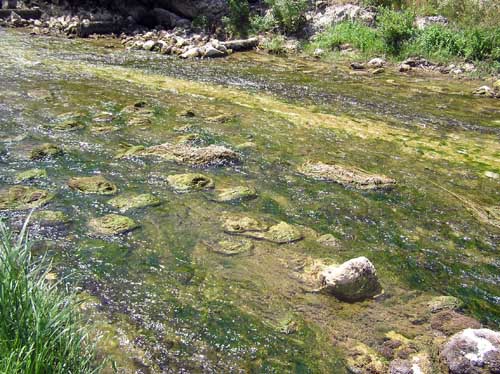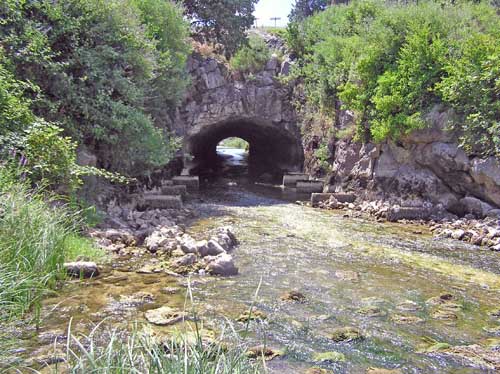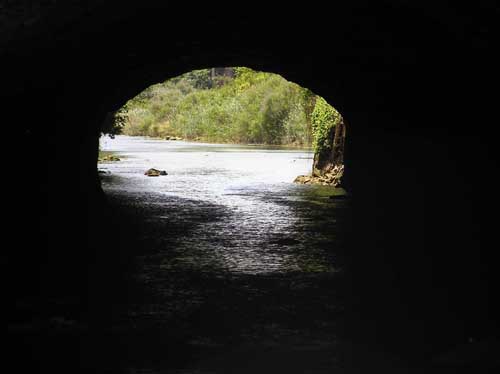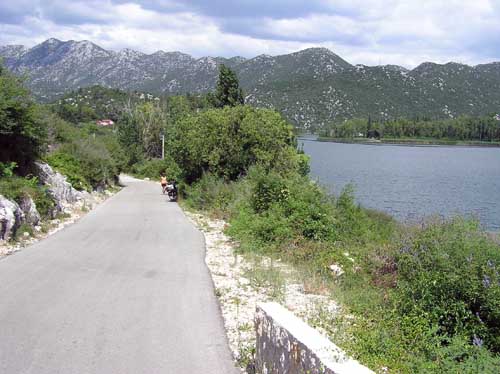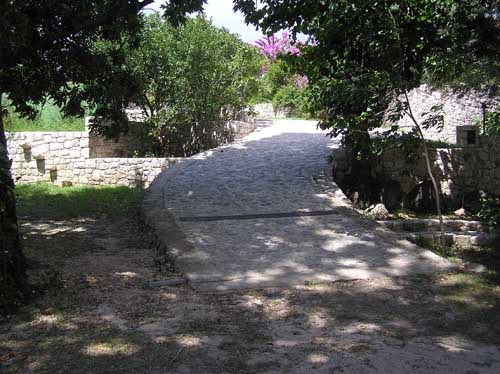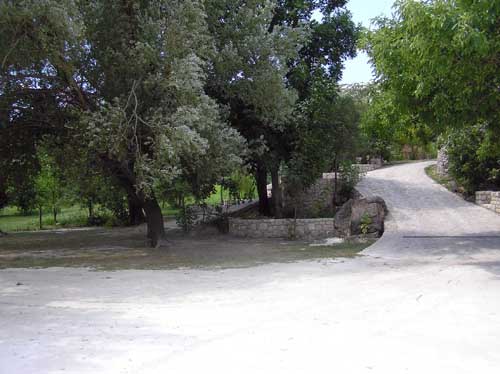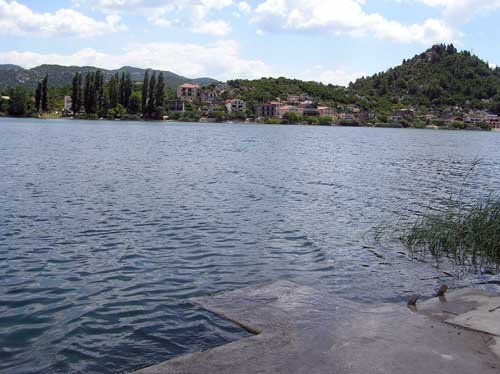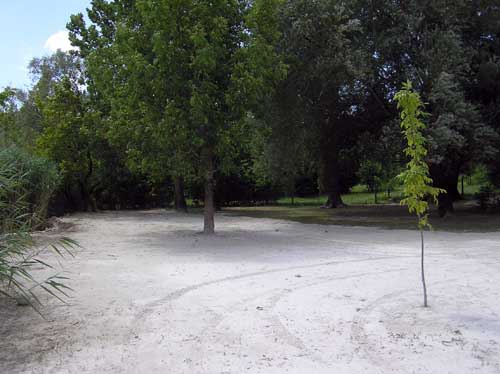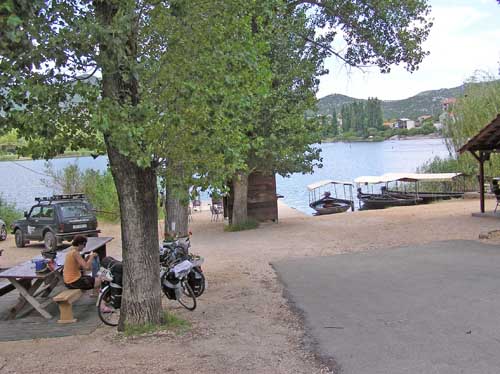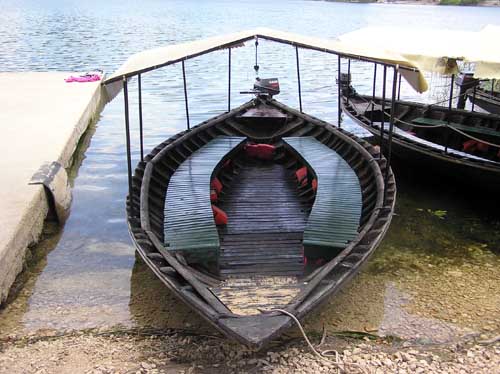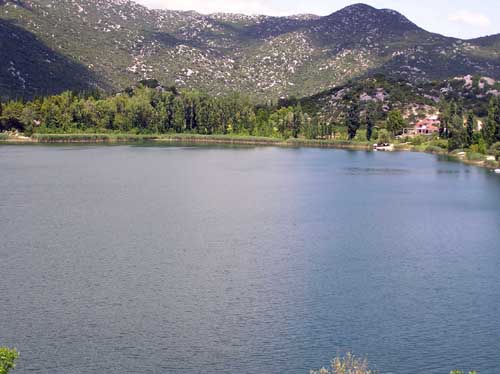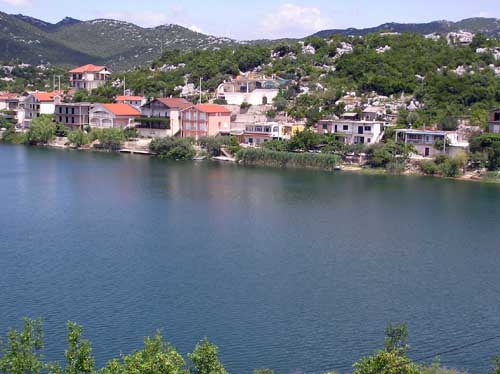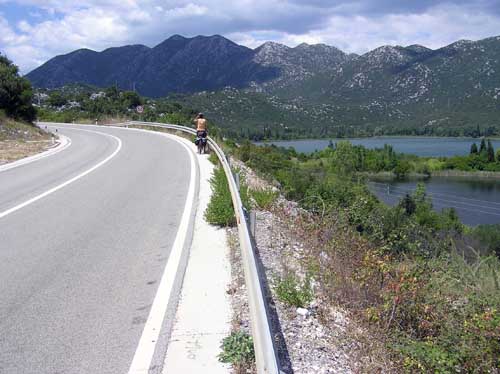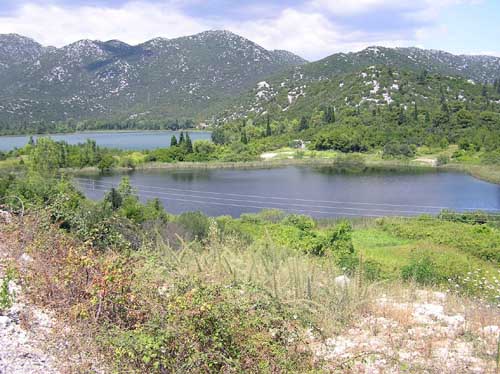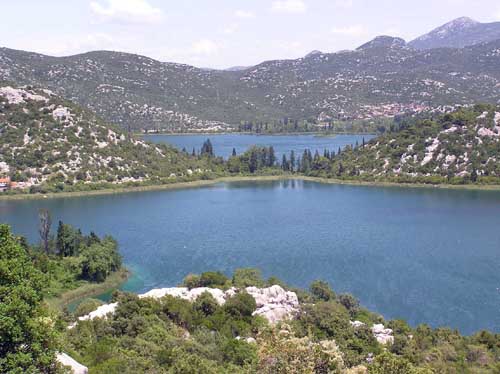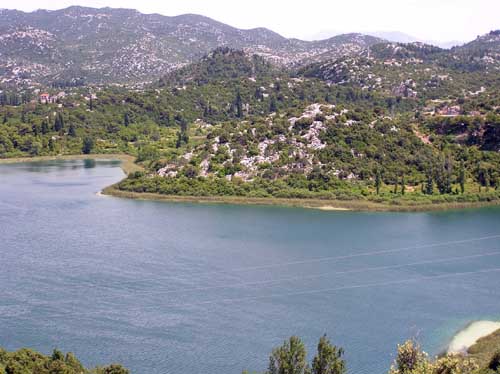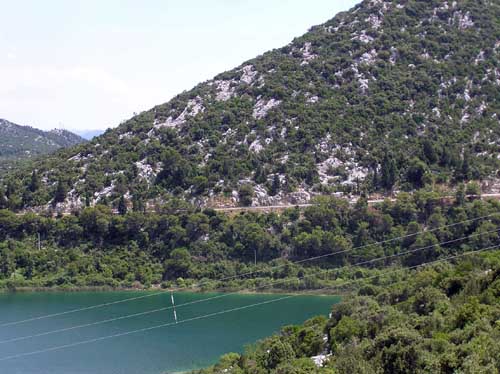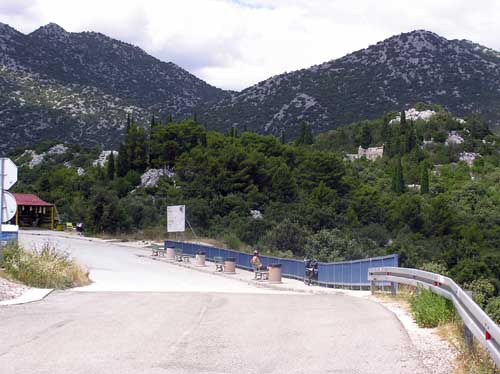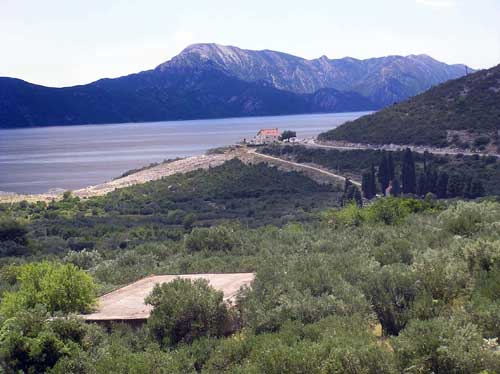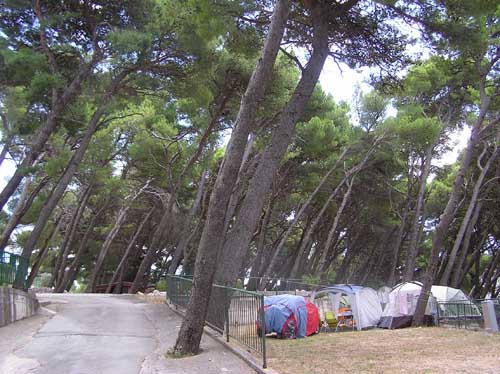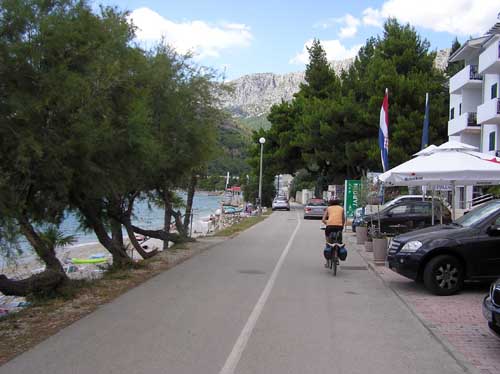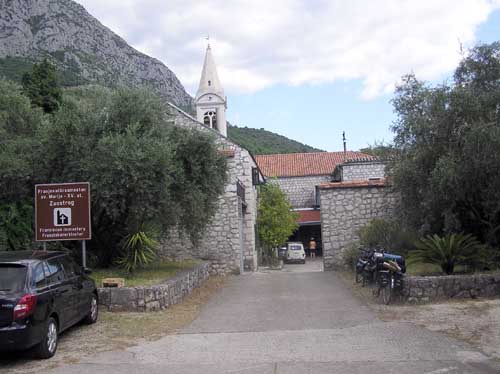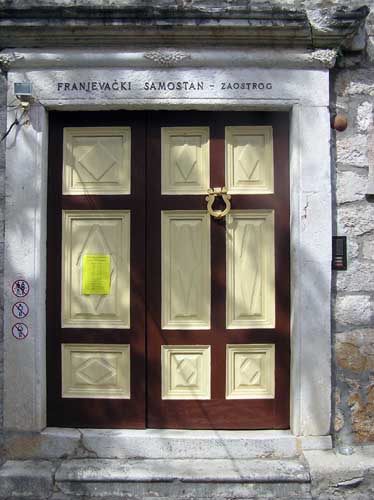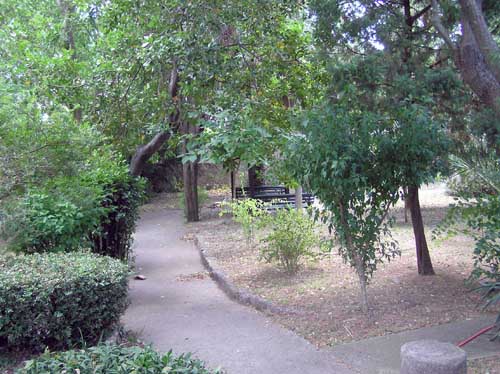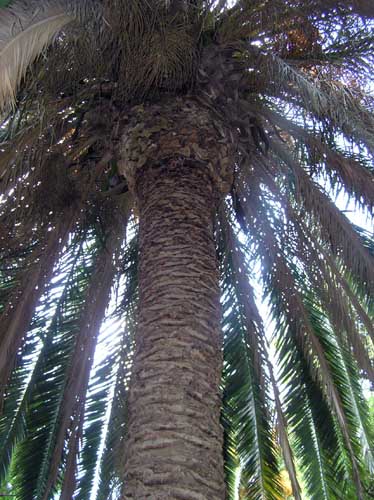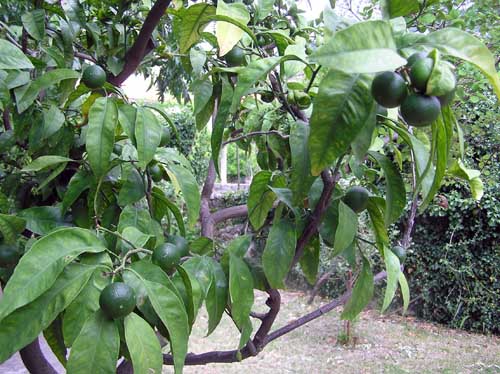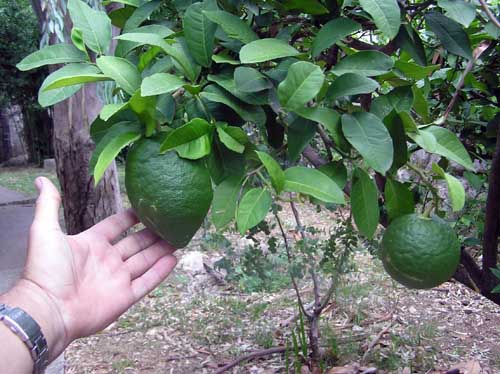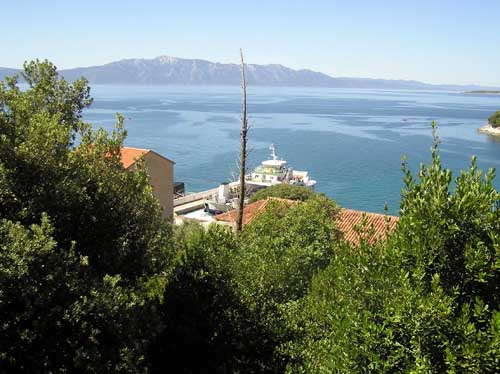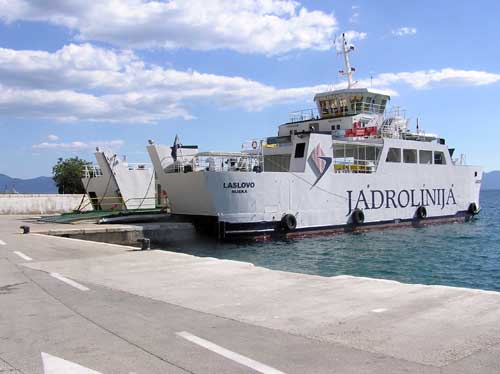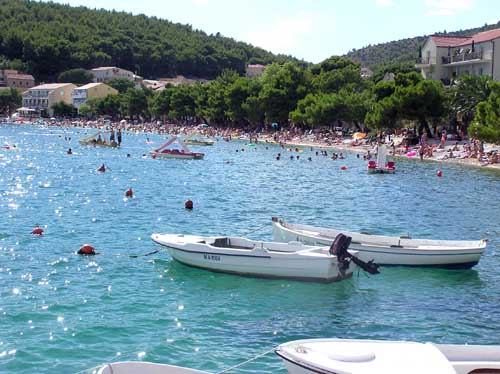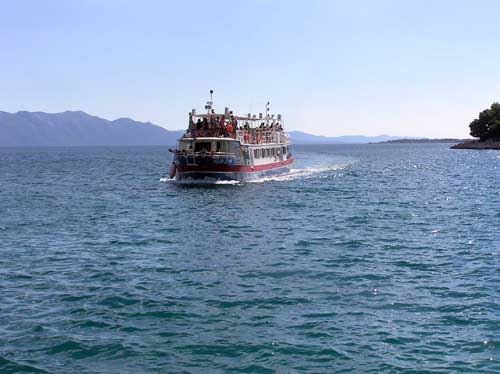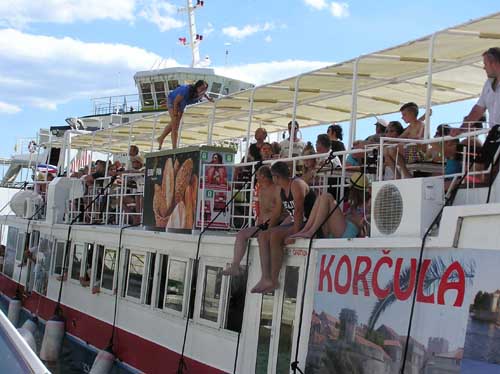Pero and his bike
nedjelja, 09.02.2020.
The Island of Hvar - First attempt 2016, Part two
You can come back on the previous part of this travelogue here.
Interestingly, with all this science and all the achievements, dreams are still unexplored. Psychologists, with their confident, authoritative attitude, try to portray themselves as some who find some kind of lawfulness, meaning, the purpose here. But, to us, ordinary mortals it is difficult and intricate to figure out those explanations. And maybe it's not their fault, maybe the human soul (psyche) is the most complex thing in the universe and its surroundings. According to it, the deepest secrets of the universe are a piece of cake.
That's how I felt after a woke up. I got the impression that my brain, mind, soul, and whatever it is, have not stopped to work for a moment. The first time I opened my eyes, my head was full of pictures, events, people, talking… everything. But a moment later, when I tried to pronounce it, one by one that I could pass them on to my companion ... the blockade! My mouth remained open without saying a single word.
I was confused at the end. So, during the night everything went through my head, but nothing of that could be pushed into ordinary or unusual words, any kind of words. So, a cloudy, undefined porridge.
Our hardworking hostess not only got up but prepared breakfast. Ours was just to sit and get eat.
So we're off. We were talking and eating simultaneously. After the salty and sweet part, and after the coffee the "do you need anything else?" was followed.
It is astonishing how the impression of passing time is relative. When we are in good company and conversation, the hours pass like minutes. When I, between two sentences, looked at my watch and saw what time is it, I unconsciously and raised my eyebrows and told my companion - It's time to go!
While we were parting, my companion and I were competing for sincere and warm gratitude for the hospitality, our hostess waved her hand saying; "No, no, thank YOU for letting me host you!"
I do not know who the two of us first remembered that we kept our mouths open too long, in surprise. We just stayed without words. That is possible too - to make a man happy by letting him caress to you, to pamper to you, in the word, to host to you.
A more detailed look at the place is followed. It was squeezed on the eastern slope of the hill. A little plain along the Neretva River was occupied by the road and the railway. The forming of the place happened in a long time ago when a kind of treasure was considered a flat and fertile soil, and to build houses on it was sacrilege. The rocky slopes of the hills can also serve for this purpose.
Boats, typical of this area, are parked on the bank of the Neretva River.
From these boats on the coast, up to the road, there were several meters of a grassy belt, so along the walled road, a kind of promenade was placed.
If we were in the south, we were witnessed by magnificent palm trees.
Because this a sunny summer morning, the place got an extra dose of unforgettable, so, with heavy-hearted we said hello to it. However, we did it with a cheerful smile.
Thanks for the visit and good luck
The next 20 km a ride on the right bank of the Neretva was followed. The road, though winding, is horizontal as far as the ascent and no traffic. All in all ideally suited for a detailed joining with the local pace of life - easy, and slow! Time by the time the wind was bringing a sound of frantic noise from the main road across the Neretva River. But it looked far, far away from us, not only spatially but also temporally. The freshness of the summer morning also was wrapping it all up in a particularly fluttering cloak, so I recommend to everyone, sincerely and warmly, to take a ride in this particularly space-time area of the Universe.
The Neretva is to our left, and our right is the railway. And the railway needs to have room for rest on its way to the sea, so we came across the Opuzen train station.
I do not know what the inhabitant of the Opuzen thinks about it, I have not been able to ask them because they are on the other side of the Neretva, but I suppose they could tell me a lot about the saying "So close yet so far away!"
Although the train station is across the Neretva River, a hundred meters far from the eponymous town, there is no bridge here. The closest is 5-6 kilometres upstream, in Metkovic, the one we crossed last night.
Thus, inhabitants from Opuzen, and other passengers too, must travel from the Opuzen place to the Opuzen train station and back over 10 km! Although the place and train station look at each other across the river.
It is similar if they go downstream to the Rogotin place, where the next bridge is across the Neretva River.
The Opuzen Railway Station…
… and the Opuzen place across the river
After Opuzen, or its railway station, the surrounding hills approached the Neretva coast dangerously, so it was necessary to carve the slope of the hills to give space for the road and the railway.
As a railfan, this riding hand in hand with the railway was particularly interesting to me. However, I did not enjoy that interesting thing for a long time because the railway discreetly retreated into the shade of the trees and left us the entrance to the Komin place.
Entrance to the Komin place in the year 2016 ...
... and in the year 2002
30 years ago I was in this same company and in this same way as I have now, I rode by this road and this place. I suppose that's for praise, at least as far as society is concerned, if not by the mode of travel. I filmed with a analogue camera in that time, with films of very low capacity (36 shots). In addition to the low capacity, these films had another inconvenient epithet - the price. So special, multiple criteria were chosen for the motive that will have the good fortune to pass in eternity by the camera. For this reason, the entrance to this place at that time remained not filmed. But many years later, sixteen to be exact, in the next (solo) passage through this place, I partially corrected this omission of filming. In part, I said, because a long pause it was followed.
At the entrance to Komin
The whole place is located on the right side of the road. On the left side of the road, behind a concrete wall, it found its place under the sun a small pier, not a meter wide, and about the same meter was under the road. This pier, one after the other, lined the parking spaces for the boats. The conclusion is that every house across the road has a parking space where it can park some kind of vessels.
The side of the house, which faces the road, was on the east side, so it's in the shade after 11 am. Because they are mostly two-storey houses, each according to their imagination has arranged a terrace upstairs with or without an awning. An ideal place to watch the surroundings in the fresh breeze from the Neretva in the afternoon or evening from the height and in the shade.
The concrete wall along the road is a kind of embankment, a barrier that will stop the waters of the Neretva River if it would rise that height. Because of this, a passage in the wall was made every couple of tens of meters so that one could descend to the pier by the stairs. And if the Neretva grows up then that passage closes with a plate that is inserted into the gutter.
The attention of my companion was drawn by a cactus whose height was so large that it did not get in my image.
In the middle of the village, there was a place for a small square where a small market with fruit and vegetables was improvised.
As we walked slowly through the place, the small sound of a small motor was heard, with the help of which the boat was disturbing the quiet and calm surface of the Neretva River.
The owner of one of the houses put in the effort so he decorated the fence with the remains of river shells.
The whole this place, or village, what could I call it already, gave us a sense of calm and peace. No one was in a hurry, no one was shouting, and no one, God forbid, was cursing. All the locals had time to stop, to say hello, talk, nothing was urgent, nor asked for special speed.
This calmenss also infected us, so we were quietly and slowly moving, losing the notion of both time and space. We were just allowing our impressions soak in somewhere deep inside us. In that nirvana, my companion remembered that she should buy a postcard of the place, to show her work colleagues what exotic she visited this summer. She walked into the first store and asked for what she needed. At first, the shopkeeper told her that she don't has it . But then she remembered something, so she looking for in some boxes and shelves for a long time, and in the end, with that triumphant "Aha!", she found two postcards and handed them to my companion. When my companion asked her how much they cost, the shopkeeper just shook her hand and said "Nothing, good luck to you!"
The disappearance of houses along the road in front of us announced that this oasis of peace, tranquility and relaxation was coming to an end.
Exiting Komin
It was not some great place, it was not a mountain, it was not a canyon, but still, it was something special. Slowly turning the pedals as I passed the board with the place name crossed, I trembled with pleasure as if I were leaving something special from that one above.
I'm so glad we were in Komin!
The railway was back to us again, on the right. To the left, as much as the greenery allowed, was the magnificent bridge of the Adriatic main road across the Neretva river.
To the far left, a piece of the bridge can be seen
According to the sun, or more precisely by its rays, we realized how long we had stayed in Komin. It became hot, too hot, so my companion needed to go boxing to change tires, like in Formula One racing. She had to change her pants, and for that, she needed some shelter, or in the form of a larger bush or…
As soon as we saw it, the bus stop of the local bus station was transformed into a dressing room.
While my companion was changing her pants in it, I, not wanting to waste time without anything, watched and filmed my surroundings.
Looking to the right, in the direction of the signpost towards the Banja place, only 0.2 km away, the abstract concept of the name takes on the concrete contours of the settlement.
The Banja place
Besides the bus station, currently and temporarily upgraded to a dressing room, the place also had a train station, just a few steps away from the mentioned bus station
The Banja train station
So the locals had the luxury of choosing a kind of transport, whether it was on the rail or on the road. While so tormented by this sweet dilemma of choice, their eyes could be amused by the meticulousness of the railway builder in the form of detailed markings on railway signs called fall signs. These fall signs in this case, in fact, indicate that the ascent of the line decreases from 6 to 4 every 20 meters, to eventually remain at 2 pro mile. Pro mile, not per cent, so 2 ‰, not 2%. 2%, in letters: two per cent, means that the rise (or fall) is two meters per hundred meters of the horizontal path (2 per cent = 2 per hundred), while 2‰, in letters two pro mile, means that the rise (or fall) is two meters at one thousand meters of horizontal path (2 per mille = 2 per thousand).
With the excuse of this unnecessary detailing, I'm just pointing out that the rail is a lot more spoiled than the road, at least with regard to the ups and the curves - on it all is the milder and gentle. This may be the reason that when traveling by train, some passengers lack stomach aches that occur when traveling by bus or car.
Although the greenery had not completely receded, it still gave me a better view of the bridge over the Neretva.
The bridge of the Adriatic main road over the Neretva River is on the left
It is also the (sinister) sign of the end of this idyllic, peaceful and quiet ride along the Neretva River. This is followed by an exit on a frantic, fast, and congested by the vehicles - main road in the direction of Ploče.
The Adriatic main road
I may have exaggerated a bit, because the above image does not show some traffic jam, but compared to "nothing", what the traffic was so far, this "something" is immensely full. Also, I captured this filming opportunity in a moment of reduced traffic.
Be that as it may, I had to tear a part of me away from that whole of enthusiasm and enjoyment, and employ it with constant cold-minded attention to the traffic conditions on the highway.
Accustomed to the relaxed enjoyment of a few minutes ago, this concentration on attention to traffic tired me, so I breathed a sigh of relief when my companion's cellphone rang. This meant we had to find a safe place and stop. And while she spoke a word or two with the imaginary interlocutor, I returned to my soul the privilege of complete enjoying to observing the environment.
And that environment was unusual, confusing, strange even. There was also some water, I don't know the lake or the sea, surrounded by the hilly hills. But, there was even flat soil for some cultivated plant life. And where plant life is, there are also human settlements. So everything was here in such a small space!
That is civilization was near to this idyllic view, it was enough to look up a little and the signs of that civilization will be seen in the distance. And what signs it was!
There were big oil tanks or something similar, port cranes, big storage ... just a kilometre two away.
As I was preparing this trip with the help of the Internet, of the Google Earth and other benefits of the information age, it would be clear to me - from the main road we should take the local road to the Ploče town, slowly and peacefully. Theoretically, it couldn't be clearer, but practically it's not (again, the difference between theory and practice).
In addition to the "old" Adriatic highway and "our" local road, there was additional confusion which was made by the bypass or speed road which was linking Ploče with the highway (that one filmed from the Kravica waterfall).
We turned off the main road to where we thought we should and after a wide road, we suddenly found ourselves on a narrow, albeit paved road next to some houses. When this narrow street turned in the opposite direction from the town of Ploce, and up the hill, it became clear to me that the statement about the difference of theory and practice was being confirmed.
Because of that, I told to my companion that we were going back. When we almost reached the main road, from which we had just got off, I asked myself: "Where could we go now!?"
As the last straw of the rescue, before the painful return to that crowded road, I saw in two workers doing something on the road or around the house next to it. When asked if we could go further to take that local road to the town, they both answered at the same time, but differently - The first one: "Yes!", The second one: "No!"
I retreated while they looked at each other, and a moment later they agreed that we could since we were with bikes - we could pass under the railroad by a track (I in myself: track !? What track !?).
After the “!?” in me, I accepted the uncertainty. It was important to me that there is some passage, and how it already looks, we will see. Everything was better than getting back on the main road.
This narrow road, still paved, gradually became narrower and narrower, and at the end, it led us to the water spring. Next to the water spring was an old woman which was resting while she waited for her plastic bucket to fill with water. After the question of whether we were going where we thought we were going and the affirmative answer, the conversation began.
So we learned that, according to her words, this water is worth as gold, it strengthens the body and refreshes the spirit. Here, she stopped by after work to take it a little. She got up at 4.30 am this morning (!) to go digging around mandarin trees (witness: a hoe near her). Now, when it's warm, she'll drink some of this healing water, then go home for a nap!
We thanked her for the information about our further road and wished her a well-deserved rest and we continued down by that narrow road. It was a path because the width of it was reduced on two letters, more precisely, to just over a meter.
If its width is only more than a meter, then its height is substantially less than two meters, so I had to lower my proudly raised nose to pass through.
It was a pedestrian passage under the railway. Here, that chameleon feature of the bike came to light again. According to the demand of the situation, it can be fast enough vehicle, and in the second case, it can only be a companion of the pedestrian.
On the other side of the passage, it is as if we have entered another space-time continuum. A wide pier emerged, leaning against the water (salty or sweet, I don't know) which was tranquil as a mirror. It shook only in a few little, tiny waves as if by her sudden arrival, we had interrupted her in the important stacking of a mosaic of light on its surface. On the other side of the pier were houses, or rather residences, decorated, refined, freshly painted, completely opposite to the area between the water and these houses. That area representing that pier, or street, or both, is waiting for a point on a letter i in the form of asphalt pavement.
According to a lacking the general notion of time in the territory where we found ourselves, I got the impression that it was a very, very, long waiting.
Either the lack of people or anyone or anything alive which would move gave me that wrong impression.
The dilemma remained unresolved, suppressed by something much more prosaic but also more concrete - how to ride a bicycle on such a surface. A little drift to the left, a little to the right. Turning the pedals repeatedly makes it difficult because, in addition to riding, the wheels penetrate in a gravelly base of crumbling stone. I was so preoccupied with the suddenly complicated driving technique that I hardly noticed the nearby viaducts of the modern detour.
I was hoping this unfinished macadam would not last long, I guess something would replace it. My hope will be fulfilled in something what was - nothing. Well, not exactly nothing at all. We could see in front of us, though barely, two-wheel tracks in the brown, dried grass, which was cut by the railroad. About some real road, there was not even r!
What was this now?
A moment before the onset of despair struck me that we would still have to return, a few dozen yards away, on the railway line, beneath the viaduct, I saw some excavator and a worker by it.
The excavator on the railroad
I left the bicycle to my companion hold it, and I went to the man who, in my eyes, took on the image of the straw of salvation.
Hello - hello - is there any local road to the town - yes - how to get there - cross the railroad and straight there (pointing with your hand) - thank you very much - you're welcome!
The salvation straw, nevertheless!
I had a triumphant smile on my face because my companion didn't ask me anything. She realized everything in an instant. That is what non-verbal communication does.
If my chameleon bicycle could be turned into a pedestrian companion on that path under the railroad track, here it was transformation feature continued into a slightly larger pouch that skipped the rail-shaped obstacle by my hand. The same thing happened with the vehicle of my wife, which I transferred a moment later, while mine, resting on some larger stone/smaller rock, returned to its basic and most used form - in a bicycle.
And finally, the road we were striving for all the time. Maybe it could have been simpler and maybe more complicated, I don't know. All I know is that persistence (this time) made sense. I remembered what makes the difference between persistence and stubbornness - the persistent succeed, and the stubborn do not!
And why have I so strive to this road at all !?
It is a route of the narrow-gauge railway Sarajevo - Ploče, which was abandoned in the 1960s. Over half a century it was changing the outlines and finally, in these days, it become as a local, but still paved, road. So my attachment to the bike joined with sympathy for the rail.
Once upon a time a narrow-gauge railway, now a local road
This light cycling by the former rail route takes about 2-3 kilometres, and most importantly, it is horizontal. Since we are already in the (wider) suburb of the Ploče town, there are also houses, I would say luxurious rather than modest.
The sumptuous bush of the bougainvillaea in front of one of these houses did not give peace to my companion, so we had to put it in eternity by one click of the camera. Later, I checked the correct name of the gorgeous flower on Google.
Otherwise, I was confused by the configuration here. We were far south, so the hills were dominated by the greyness of the rocks typical of Dalmatia. But there is also soil, flat like a pan. It was as if someone had applied a mass of soil and leveled it, so the hilly rocks below were buried, and the ones above it were rising just above that soil plain. Rightly so, even if someone did. In fact, that someone was the Neretva river, which, with impressive patience, over the course of thousands of years, grain by grain, picked up the soil somewhere upstream and brought it here.
That was why, at the very least, a tunnel was unusual in this plain, as far as the road is concerned. But, it did not made any bad impression to me, indeed. So small tunnel on the same road gives the impression of a pleasant bike lane rather than a road for (faster) motor vehicles.
The entrance
I can't exactly explain why I have a preference for this type of construction on the road, and I don't have to. After all, the job of rationally explaining something that is emotional is often a futile and nonsensical job, so I give up explaining myself and indulge in pleasure
In the tunnel
The exit
After this tunnel, and until the next (there are two in total), our present road, just like the long ago the narrow-gauge railway, makes a bend to the left.
Wandering around the Internet, I found an image from the time of construction of the narrow-gauge railway Metković - Ploče, of which today there is only a pavement covered with asphalt, on which we were pedaling. It is a fascinating change of environment, which in the meantime, has transformed itself from an rocky gray jungle into an urban jungle of various habitats clustered side by side. Image borrowed from http://www.drustvo-neretvana.hr/index.php/zbornik (Hrvatski neretvanski zbornik 1/2009.), https://hr.wikipedia.org/w/index.php?curid=503744
Today...
...and about 70 years ago
The portal, the entrance to the second tunnel, barely managed to preserve its place under the sun from the invasion of residential buildings, both on the left and the right and in fact, from the upper side too. I have been a little bit scared if there underneath the tunnel were any corridors and rooms of these buildings.
Filmed 2016
Filmed 2002
It came to the end of this former narrow-gauge bike path, and we took the present road. It was wide as needed for all types of traffic, and there were plenty of them. Left, right, here, there, all in the company of many cars, trucks and buses in both directions, we came to the Ploče town.
According to my companion's wish, we first had to visit the post office building.
My companion in the mail office did what she intended to dowhile I waited in the shade for a while. An interesting form of modern art caught my attention. One remembered that a computer-controlled automatic steel plate cutting machine could also be used artistically. It is enough, then, with some skill, that the programmer of the machine explains to the machine how to make a sympathetically warm picture of a mother and offspring from a dead-cool steel plate (and maybe it was Dad !?)
The train station in Ploče seems to be a monument to some ancient times. There was nobody nowhere! I felt like a guest from a galaxy visiting a long-dead planet where the remains of an ancient civilization are still being recognized. And it was made half a century ago, in my childhood.
The Ploče railway station
Going out on the platforms makes the same impression. Rusty rails and grass which breaking through the edges of concrete testify that the time for this mode of transportation is finished ended for many years ago.
The view from the platform to the station building with the magnificent inscription "Ploce" once upon a time caused a smile of tired passengers and indicated that the journey had come to an end and that they had finally arrived at that long desired and expected sea
Now, people traveling to the sea by the roads, and mostly everyone do that in their tin pet. The road is faster in time and more financially advantageous, but it lacks enthusiasm. Both because of today's oil abundance and also because of the modern emotion refraining in which any open expression of emotion, especially positive ones, is inappropriate.
It took only a little over half a century for this magnificent building and these platforms to become past and finished time. How much time will need for cheap oil age for that !?
The locomotive of the narrow-gauge railway was located on the side of the platform, as a witness of past, completed times (the times before this railway whose platforms are). I filmed it today, when it was decrepit and rusty, and also in 2002 when (together with me) it was younger and prettier.Filmed 2016
Filmed 2002
And how long did that old locomotive drive to Ploce?
Following the annexation of Bosnia and Herzegovina in 1878, the Austro-Hungarians built a narrow-gauge railway (popularly known as chiro) from Brod, via Doboj, Zenica, Sarajevo, and Mostar to Metkovic, making Metkovic the first port in Dalmatia which got a railway link. All this was completed in 1891 when the last leg was completed. Notice that the 400km track was made in 12 years - all that 140 years ago!
Then, already after World War I, it became clear that the Neretva in Metkovic was too shallow for some ships, and an initiative emerged to extend the railway to Ploče. With some backstage games, of which there is no point in writing here, the first train came to the Ploče town in 1942. This locomotive was driven to Ploče until 1966. So, I found out, with a little bit of math, it is driven only for 44 years.
It was less than half an hour by mid-day, and upon entering the city, we decided to first renew our reserves with fuel, both solid and liquid. We parked in front of one of the shops.
While my companion, as a true caring housewife, meticulously, devotedly and accurately was selecting foods, I watched from the shade of that store the city bustle and the city around me. I was particularly impressed by the concrete jungle right across the street. In the absence of space left-to-right, all it had left to did was went up. That's what it did.
And now the town.
Well, we were going on a waterfront, because we didn't want to buzz left and right around town.
Coming to the sea (Ah! Finally the sea !!!), we were first greeted by small but strong harbour tugboats. According to Wikipedia, a tugboat is a ship used for turning, towing and pushing other vessels in ports, on the high seas or through rivers and canals. In Croatia, this type of boat is most commonly referred to as a "remorker" (tal. Rimorchio = tow, haul).
Browsing through my archive of slides, I found a shot from 1980, when I ventured, as a real railfan, to ride the Doboj - Sarajevo - Ploče railway.
Filmed 2016
Filmed 1980
According to Wikipedia, the oldest inhabitants of this city call their town Ploča (ploča = panel, plate), which is the original name of this town. The name Ploča was given probably because the inhabitants of the surrounding villages and the first settlers were taking out and drying their fishing nets in the area of today's town or on an islet in the middle of the bay that looks like a flat plate. The town has a very "rich" history of changing its name. First, during the Kingdom of Yugoslavia (before WWII), the name was changed to Alexandrovo, according King Alexander I. Karadjordjevic. That name was kept until II. and the Italian occupation, when Alexandrovo became Porto Tolero (the Italian port of transhipment, which is a banal truth, because it served them for the embarkation of raw materials from Bosnia to Italy). After the end of the war in 1945, the original name was returned, Ploča. From 1980-90.it name was Kardeljevo after the Yugoslav communist politician, Slovenian Edward Kardelj. Meanwhile, from 1954-80. the name Ploče (panels, plates) was introduced for the first time, that is, the plural of its original name, which goes back to the beginnings of the independence of the Republic of Croatia, on November 22, 1990. The town of Ploče today has 6500 inhabitants.
Queen of Heaven and Earth Church is a Roman Catholic church in Ploce. It is more recent, its construction was completed in 2004 and is of basilica status (white basilica).
So much about the Ploče town!
After the church was followed by blowing and sighing during the uphill riding. We are leaving the city and aiming for Bacina Lakes.
According to Wikipedia, Baćina Lakes are a set of lakes in the Baćina place near the town of Ploče. The lakes are relatively small (138 hectares), but they are among the most interesting phenomena in karst hydrography. They are irregular in shape, which is especially reflected in the relief of the bottom. They consist of six connected and one separate lake. The deepest lake is Trnishevo with a depth of 34 meters. Vranjak is the smallest of the lakes and is only not connected to other lakes. The water is freshwater in them, and there are springs that are directly connected to the sea. Of the many springs, it is important to note that in the area of Klokun near Plitko Lake (Shallow lake) there is a source that provides drinking water for the city of Ploče and the wider area. The lakes are crypto depression, which means the bottom of the lake is below sea level. There are three small islands and two tunnels on the lakes. The first connects the lakes with the sea in order to take the excess winter water coming from Vrgoracko Polje and for prevent the flood. A second tunnel to the Bacin Lakes 2 km long was dug to drain excess water from Vrgoracko and Stasevacko field.
Considering we rode towards these lakes in the opposite direction of the watercourse, we first encounter a nameless creek that takes the water from the lakes to the sea.
With a little help from modern technology, this time in the form of a zoom lens, we reach our eyes to the tunnel that allows the outflow of water masses into the sea. Although it is not visible from the thick greenery, the Adriatic main road is placed above that tunnel.
Exit from the tunnel
After we crossed the Adriatic main road, we saw one of the lakes.
As a tunnel lover, it gives me a unique opportunity to see one water tunnel. This does not mean that the tunnel is made up of water, but that it serves for water flow.
The calm surface of the lake water hides its gentle movement.
But when it reaches the shallows, it fails to hide its calm. Even the quiet but still audible murmur disclose the daily aspiration of every water, even this one here, towards the sea.
It will be that the downward slope of the watercourse increases because the water became more impatient to reach its main destination. Namely, the speed, and with it the murmur of water increases.
Entrance to the tunnel
At the end of this review, it all was ending in the darkness of the tunnel, through which it was only hazy to see the stillness of the dignified journey of single water.
It was time for touring these lakes. An additional reason for the tour was the signpost, which proudly announces that there was a kilometre to the campsite on the lakes.
This road was narrow but paved. Traffic was rare, and when it would come, it was slow, so our ride was reduced to light and relaxed observation of the environment. And why should we rush when to the left of us was a hill and to the right was still water that exudes purity and transparency.
30 years ago, my companion and I, in our youthful days, spent the night in a camp on these lakes. Whether or not for that was guilty past war, I do not know, but someone made good efforts to devastate it thoroughly. After the war, they left Mother Nature with her plants to hide even the few remaining signs of that camp, so I didn't even bother to find the location where the grain of my (and our) youth sleep. Instead, we found a new campsite elsewhere.
And we came to that new camp!
With the polite question of whether we can get in, we get even kinder permission from the camp boss.
In the camp - no one!
No tent, no caravan, no camper, nothing, absolute zero! It was as if we were coming in mid-January, not mid-July!
Otherwise, a nice little camp. Flat earth with thick shade, and there is also a small pier with clear lake water. If the road brings me to this area again, I'll stop by for an overnight stay. If they survive, because, it seems to me, their business is not going well right now.
Entrace to the camp
The pier
The camping sites
It was already 2 pm, so it was time for lunch. We found the place perfect for it. Shade, lake, table with benches.
While my companion, as a true caring hostess, was preparing the lunch table, I went to the shore and filmed a pleasure boat.
The boat was a traditional Neretva boat, on wich benches and awning were added. Such boats, according to Wikipedia, until the early 1970s, were the primary freight vehicles in the Neretva valley.
After lunch, we allowed ourselves to rest. The wind started to blow a lot from the Ploče town, which caused a return of heat on my face, so my rest went down well to me. It may seem difficult to realize, but you can take a nap on a flat wooden bench and even dream a little.
Upon returning to the main road, we had about 3 kilometres uphill. At first, I drove, but then it was more profitable to me to refer on my late years and then walk on foot than playing some exaggerated masculine dignity. Also, the environmental situation, except for that uphill, was ideal, because to my right, more and more below me, was the blue-green blue of the lake water.
Obviously, under the impression of all the above, my companion, though a little moving away from me, occasionally was interrupting the riding to perceive, to listen, to feel, or in a word, to experience the environment.
What nature puts together, no one can. A few hills, a few greenery, a little plain, all that with pure, clear water, and we remain amazed! I don't feel the need to talk, I don't think about anyone, I just look at it, impressed.
By the way, even though we were on the Adriatic main road, the traffic has been significantly diluted as soon as we have left the Ploče town. Also, the road was wide. Not only that, on the right side of the full white line there is often still almost half a meter of space for us cyclists. So even my otherwise fearful companion, as far as frantic cars and cruel trucks, was remained calm and serene.
A back view on the Adriatic main road on which we were riding
Subsequent processing of the images and merging them into a panorama results in something called - a panorama.
Yes, this panorama makes a general impression, but believe me, because I've been there, it's not nowhere near what it gets when you are on the spot. So, turn away from vain talk, overthinking and unreasonable fear, rather take a bike and go to the Bacina Lake while you still can. It will be late later, the time is running out to you too.
There was a lookout with a parking lot on the pass, and there were benches too, so you can sit and enjoy the view of the lakes. Here, my fluttering companion ("Where are you so far?") was waiting for me, comfortably placed into a wooden bench chair.
It was followed multiple times up and down, left and right until we finally saw the sea.
Aside from blending in nicely with the composition of the image, the purpose of the house was not clear to me. But, I hope, that it was clear to its builder.
Across the sea, we saw the Peljesac peninsula with the peak of St. Elijah watching this sea from an altitude of 960 meters.
It was (again) up and down along the Adriatic main road. Traffic intensified, so I had to, with cold head, extremely rationally, keep an eye on the situation on the road and around.
About 3 km before Drvenik, where we plan to skip the sea and reach Hvar by ferry, my companion wakes me up from the monotony of driving to stop and look at how it looks.
What does it look like? What , what is it!?
It was only a moment later that I realized that we were at the entrance to the exotic campsite called "Uvala borova" ("Pine Bay").
According to the upright, or better said sloped, pines in the camp (really pine trees, is there a bay, too?!) It is easy to conclude that winter is not as idyllic here as summer, and a winter stormy wind in these areas is not at all a harmless thing.
I was already a little tired and I wanted to get to the ferry as soon as possible, I didn't want to stop, but when we were there, for her, for love, yet I stopped.
The campsite was quite large and shady. Almost all over the camp was a shade of pine, which is an extremely special form of shade. It was quite steep, so the camping sites are terraced. Between the terraces, there are stairs, for pedestrians, while for vehicles there were serpentine road at the ends of the terraces.
Now I unnecessarily talked about the camp in detail, and my wish was to go through it as soon as possible and move on. But, the future development of this journey will drastically disprove me, and give this visit to camp, and her idea for that, a crucial importance.
By walking down the campsite, going down the stairs, carrying bikes, we took the local road. Immediately across from it was the shoreline with the beach, and we continued to ride slowly along with it, watching the tourist bustle and offer.
About a kilometre away, by the straight road, which also was some kind of promenade, as many people walked on it, we arrived in Zaostrog. To me, for the first time in my life, it looks like a small village, but for her, it was many, many more. Many years ago, when she was a little girl, she and her sister and parents used to spend the summer here, right here - in the Franciscan monastery in Zaostrog. Clearly, uncontrollably and turbulent memories have appeared, so the visit to the place and the monastery, was a must.
The place was small, so we didn't take a lot of time for its tour, and since the monastery was closed, neither for its tour too.
Franciscan monastery in the Zaostrog place
Franciscan monastery in the Zaostrog place - main entrance
We visited, in fact, the botanical garden of the monastery. As a tech-savvy, I don't know much about botany. That is why, at first glance, the garden seemed tight to me, almost overcrowded. Obviously, the available surface did not follow the wishes of its creator. Yet, I admit that I came out of it with a bigger impression than expected.
According to Wikipedia, Zaostrog had only 372 inhabitants in 2001. According to the records of the Byzantine emperor Constantine Porphyrogenitus, the Ostrog fort under Vitter, after which Zaostrog was later named (za-Ostrog), was the capital and fortress of the then Croatian state of Pagania, founded by the Neretvans. Zaostrog had 700 inhabitants in 1935 while 200 were displaced abroad.
In the Zaostrog place is dominated by the Franciscan monastery of St. Mary with a high bell tower. Visitors to the monastery can see in a museum an ethnological collection, a gallery and a large library with over 30,000 titles, a significant part of ancient Croatian literature. He spent of his creative life there, perhaps the most prominent Croatian folk poet, Br. Andrija Kacic Miošić, known and loved by the people as "Elder Milovan", as well as his greatest work, "The Pleasure of the Slavic People".
As I said, the monastery was closed, so there was no other but let's move on.
About 4 kilometres behind Zaostrog is the equally small place of Drvenik known mostly for its ferry connection to the island of Hvar. We saw the ferry from the main road, so a zigzag descent to it followed. No, it didn't sail out without us, even though it looked like that for a moment. We were still waiting for boarding for almost an hour.
According to Wikipedia, Drvenik had a population of 500 in 2001 (who would say, more than Zaostrog!), And judging by the down image, the whole place is down to the beach today, maybe even more.
An additional joy was the arrival of a tourist boat with extremely noisy music (we first heard the boat and then saw it). To make the music itself not too monotonous, with her dance on a special podium, the beauty in a blue T-shirt tried. Neither I liked the music, nor the dancing, and it seems that I was not alone in this attitude - I conclude this according to the indifferent face of most passengers on boat.
You can view the continuation of this travelogue here.

Dnevnik.hr
Gol.hr
Zadovoljna.hr
Novaplus.hr
NovaTV.hr
DomaTV.hr
Mojamini.tv
Comments
Any kind of comment, please send it to
pero.dupcek@gmail.com
You can see these and some other travelogues in the Croatian language here.
Retro rides
The River Tara and its bridge
Under which circumstances your narrator experienced one of the two most lively moments ih his life in 1985
The first time with the girlfried to the coast
How romantic was it around me, around her and around the bike in 1986
Honeymoon 1987 Part One
Part one of the best Honeymoon of all Honeymoons
Honeymoon 1987 Part Two
Part two of the best Honeymoon of all Honeymoons
Days rides
Caroline 2016 - Part One
Part one of the riding on the Caroline road
Caroline 2016 - Part Two
Part two of the riding on the Caroline road
Istria 2020 Part One
The first part of a story about Istria that I didn't know until now
Istria 2020 Part Two
The second part of a story about Istria that I didn't know until now
Multi-day Rides
The Krasno village between 20 years - Part one
The first part of the story of two ridings on the same route with a time interval of 20 years
The Krasno village between 20 years - Part two
The second part of the story of two ridings on the same route with a time interval of 20 years
Ochevia 2013 - Part One
The first and second day of the journey to the village of Ochevia (Očevija) in Bosnia
Ochevia 2013 - Part Two
The third and fourth day of the journey to the village of Ochevia (Očevija) in Bosnia
Alone in summer 2015 - Part One
The first part of the journey that is, in some way, the extension of the journey to Ochevia 2013
Alone in summer 2015 - Part Two
The second part of the journey that is, in some way, the extension of the journey to Ochevia 2013
Alone in summer 2015 - Part Three
The third part of the journey that is, in some way, the extension of the journey to Ochevia 2013
Alone in summer 2015 - Part Four
The fourth part of the journey that is, in some way, the extension of the journey to Ochevia 2013
Alone in summer 2015 - Part Five
The fifth part of the journey that is, in some way, the extension of the journey to Ochevia 2013
With a girlfriend to the sea, again! The August 2nd
The first day of the great journey
With a girlfriend to the sea, again! The august 3th
The second day of the great journey
With a girlfriend to the sea, again! The August 4th and 5th
The third and the fourth day of the great journey
With a girlfriend to the sea, again! The August 6th
The fifth day of the great journey
With a girlfriend to the sea, again! The August 7th
The sixth day of the great journey
With a girlfriend to the sea, again! The August 8th
The seventh day of the great journey
With a girlfriend to the sea, again! The August 9th and 10th
The eighth and the ninth day of the great journey
With a girlfriend to the sea, again! The August 13th
After two days of rest, this is the story of the twelfth day of the great journey
With a girlfriend to the sea, again! The August 14th and 15th
The thirteenth and the fourteenth day of the great journey
With a girlfriend to the sea, again! The August 16th and 17th
The last two days of the great journey
The Island of Hvar- First attempt 2019, Part one
The first part of the journey to the Island of Hvar
The Island of Hvar - First attempt 2016, Part two
The second part of the journey to the Island of Hvar
The Island of Hvar - First attempt 2016, Part three
The third part of the journey to the Island of Hvar
Knin - Split 2020 Part One
The first part of the journey in southern Croatia
Knin - Split 2020 Part Two
The second part of the journey in southern Croatia
Knin - Split 2020 Part Three
The third part of the journey in southern Croatia
Knin - Split 2020 Part Four
The fourth part of the journey in southern Croatia
The Una River - Introduction and the first day 2019
The story of the river Una, the one and only
The Una River - The second day, the return and after the return, 2019
The story of the river Una, the one and only
The Una River - The first day again 2021
The story of the river Una, the one and only
The Una River - The second day again 2021
The story of the river Una, the one and only
The Una River - The third day 2021
The story of the river Una, the one and only
The Una River - The fourth day
The story of the river Una, the one and only
The Una River - The fifth day, Part One
The story of the river Una, the one and only
The Una River - The fifth day, Part Two
The story of the river Una, the one and only
The Una River - The sixth day, Part One
The story of the river Una, the one and only
The Una River - The sixth day, Part Two
The story of the river Una, the one and only
